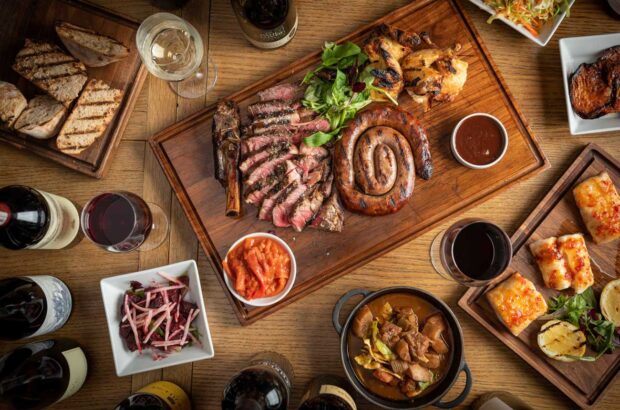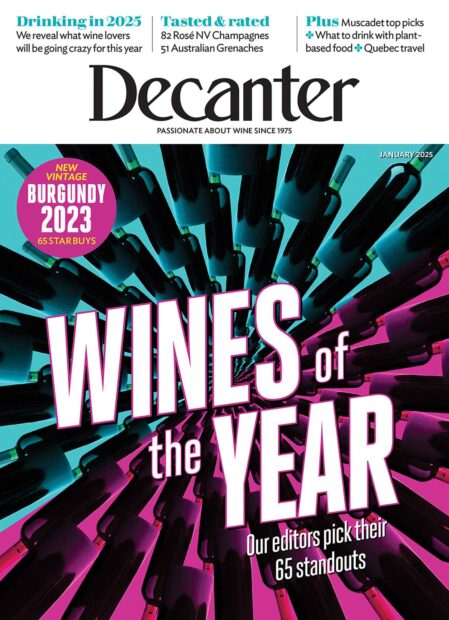Jane Anson looks at the main reasons why Bordeaux châteaux are still holding stock back...
It’s been a slow burn really.
Châteaux have always kept some wine back for themselves. In the 17th century it might have been a barrel of their best grapes for the owner. In tough times, it was often the buyers who set the terms – a contract from 1916 between Château Margaux and a small group of négociants who agreed to buy the entirety of its crop for five years specified that the estate was allowed to keep four barrels back for its own use. Later, during the 1970s oil crisis, négociants would regularly refuse to take any wine at all and châteaux would be forced to keep stocks piling up in their cellars.
So watching what is happening today must be rather surprising for some of the older guard in Bordeaux. All of a sudden it is increasingly fashionable for the region’s top châteaux to choose to keep back increasing percentages of their harvest to age in their own cellars and release at some later, usually unspecified date.
The late Daniel Lawton, one of Bordeaux’s most illustrious courtiers from the firm of Tastet Lawton, told me a few years ago, ‘Wine gathers in price when most of it has been drunk, so the chateaux should have little interest in keeping too much of it’.
If this is true, why are they doing it? And what does it mean for us?
Squeezing supply
Younger brokers admit that while the old theories still hold true, land values and on-paper stock values have become increasingly important to many classified châteaux, especially if they have shareholders to answer to. Put this together with an increased demand for older wines with provenance, maintaining greater control over distribution and the temptation to keep prices high by squeezing supply and suddenly things start to make more sense.
The strategy has become increasingly obvious during recent en primeur campaigns, starting with a trickle and building slowly and steadily as the Bordelais follow their tried-and-tested route of ‘if it’s good enough for my neighbour…’.
The first nod must of course be given to the spectre at the feast of every en primeur campaign since 2011: Château Latour. It is no coincidence that a trend to holding back stock has followed the First Growth’s exit from the system, although few chateaux are as clear in their strategy.
Leaving en primeur
You can take your pick of approaches. We have Latour keeping 100% of stock back until it is approaching its drinking window (the exact time varies on the vintage) and Yquem also stepping entirely back from en primeur but selling when in bottle, so two years after harvest.
Alongside this is Palmer that sells 50% en primeur and keeps another 50% back to be sold as a mature wine, and then Cos d’Estournel and Ducru Beaucaillou, that keep perhaps 15% back per vintage. Plenty of others, from Pontet to Lynch to Margaux, seem to have a more flexible approach that changes depending on the vintage while there are a few still out there that continue to release 90%-plus (Grand Puy Lacoste just might still fall into this camp), but their numbers are dwindling. As châteaux split allocations between usually two or three courtiers and up to 30 or 50 négociants getting exact numbers is tough, but the trend towards keeping wine back is acknowledged by all.
Nick Martin of Wine Owners says that the elusive promise of the Chinese market is a big factor. ‘China is a market that doesn’t buy en primeur, and yet it is experiencing a renewal of demand for older wines after a few difficult years. This is encouraging chateaux to hold on to significantly more of the harvest so that they can serve the Asian market down the line’.
This undoubtedly is part of the equation, but dig down and you’ll find a host of other explanations.
Stocks for the cellars
‘In my opinion it is not in the nature of our mission to hold on to stock for speculative reasons,’ says Bruno Borie at Ducru Beaucaillou. ‘Our back stocks are ‘safety stocks’ for our own library, or ‘irrigation stocks’ that can guarantee continuous supply to the market. Keeping back inventory to release when ready to drink, say after 10 years, makes a lot of sense to be honest. But it is not realistic at this point from either a distribution or production standpoint’.
For others, such as Stéphanie de Bouard-Rivoal at Château Angélus, keeping stock back is a case of learning from past mistakes, and is not done with the intention of releasing them commercially.
‘Historically, among the top 30 châteaux in Bordeaux, Angélus has always sold an extremely high proportion as futures – up to 95 % of the production in every vintage,’ says Boüard-Rivoal. ‘It was not a strategy exactly but rather an attempt to satisfy the demand within the limit of the production’.
‘The problem was it left us with critical level of stocks and did not allow us to pour old vintages in decent quantities. My intention now is to hold up to 20% of the production every year. This has nothing to do with a commercial strategy, as very little of these wines will be offered to the market afterward. We are holding them instead so that our grand-children can pour wines that are 50 years old more frequently than we do.’
Later releases
In contrast over at Château Palmer, managing director Thomas Duroux has kept 50% of Palmer back at the estate since the 2010 vintage, with a clear commercial strategy for doing so. ‘The market has changed,’ he points out. ‘There are still some people who want to build their own cellars but many more, particularly younger drinkers, do not. So we keep a significant amount of Palmer back to release after 10 years, although we still sell around 95% of Alter Ego de Palmer in the traditional manner’.
‘We do still want to release en primeur for Palmer itself but do not expect merchants to take and store the wine. We will do that back at the château, because there is a provenance premium for ex-château, and we want to ensure the best conditions for them. But Palmer has never sold a single bottle direct to consumers – we support the negociant system’.
You’ll find another reasoning over at Yquem, where managing director Pierre Lurton has said several times that the en primeur system doesn’t work for even this most iconic of sweet wines in a system weighted towards the reds. Instead, for the last few years they have released Yquem once in bottle at around €210 ex-Bordeaux. I understand that this is what they are looking to do in the future also, so offering stability of pricing combined with a regular September release (something that has worked very well for Opus One with the Place de Bordeaux).
These four different approaches show how tough it is to decipher what is happening right now in Bordeaux, and what impact it will have on drinkers of these wines in the future.
‘It’s hard to say how all of this will affect things going forward,’ Anthony Maxwell of Liv-ex said this week. ‘Latour has had mixed results with its strategy so far, but it is just one winery, plus the volumes out on the market are still relatively small. If you multiply it out to something like 30 chateaux, will the market have enough capacity and indeed thirst for the supply? Combine that with increased quality of wines from other regions, and consumers’ greater appetite to look beyond Bordeaux, and it starts to look like a risk’.
More Anson on Thursday:

Anson: Bordeaux before the French Revolution
Jane Anson gets a glimpse into a forgotten world...

Anson on Thursday: Euro 2016 and wine in Bordeaux

Anson: Fomenting a Spanish red wine revolution
How can Spanish red wines take the next step up?







